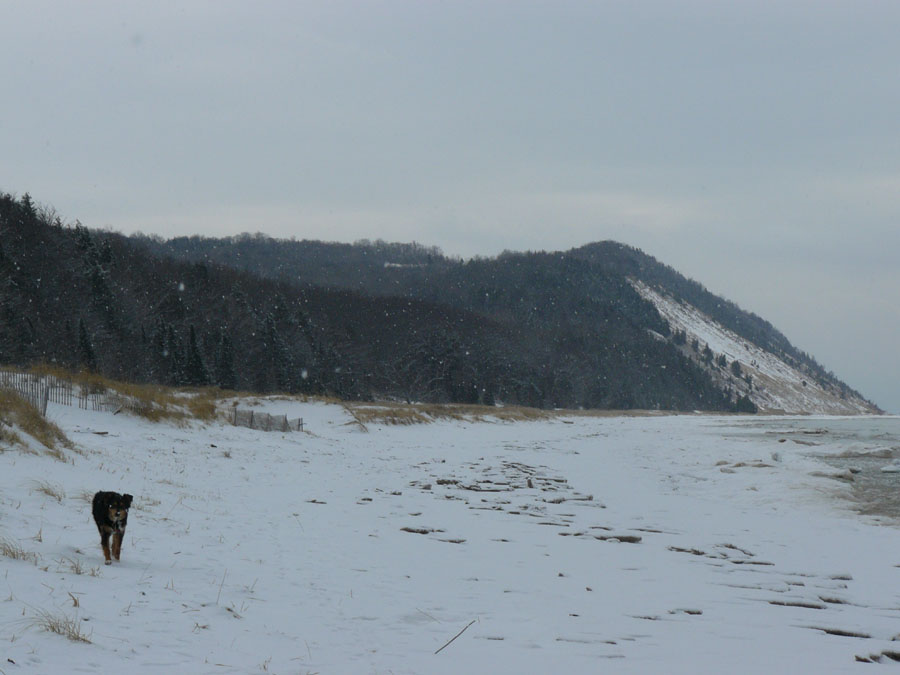 Location Taken: Arcadia, Michigan
Location Taken: Arcadia, Michigan
Time Taken: January 2011
The land near my Grandparents, along the northwestern coast of the lower peninsula of Michigan, is dune country.
The winds coming over Lake Michigan pick up the sand on the beach and push them inland until the trees and landscape slow down the wind enough that it drops its load of finely ground rock. It piles up over the centuries, sometimes becoming locked down by vegetation, other times piling up so much that any more sand (or seeds) that land on it just slide down the slope. It’s pretty easy to see that in the background of this photo, the triangular shape of bare sand on a hill, surrounded by trees.
Well, actually, it’s not triangular. It’s an upside-down filled in U shape, aka a parabola shape. It just looks triangular since it’s at an angle to us, which scrunches the shape.
This type of sand dune is called a Parabolic Dune because it has that shape, for obvious reasons. They only form in more humid and vegetation rich climates like those found alone a coast line. They also require frequent strong winds from one direction. If the winds aren’t strong or frequent, they don’t pick up much sand, and if it comes from multiple directions, the sand doesn’t pile up in one spot. Winds of this type are actually pretty common along shore lines, since land and water lose and gain heat at different rates, leading to daily cycles of heat imbalances – which is what forms wind.
If there were these strong, frequent unidirectional winds in a sandy area, but it wasn’t humid enough for vegetation, you’d get a different type of dune. Barchan dunes are common in deserts, and look pretty similar to parabolic dunes, a U-shaped or crescent shape of sand, except for one key difference – the U goes the other direction. Without vegetation to lock down the sand, the dune shifts with the wind even as it gets added to. The edges of the dune get spread out much easier than the center, since there’s less of a wall effect going on to block the wind from going where it wants, so both edges of the pile of sand that is a dune head away from the wind more than the center does, forming a crescent with the round part of the U pointing in to the wind.
Parabolic dunes have the opposite orientation because of vegetation. Vegetation grows where there’s enough water to trigger the plant growth and enough nutrients in the soil to feed the plants as they grow. Different plants have different requirements, which is why you find a layered look to the vegetation along the shore, with trees in the far back, then bushes and small plants, and then, at the edge of the sand, grass. The grass doesn’t need much stability to its ground while it’s growing, nor does it need much in the way of nutrients. In fact, it provides stability and nutrients. In further back areas, where the small bushes are, they are growing based on the remnants of former dune grass, the roots locking down the soil, the decayed grass matter providing nutrients the sand lacks. Still, the dune grass has limits. If there is no water, it cannot grow, and moving sand is not a great source of water. Neither is a steep slope, as the water that falls on it will flow downhill a bit too fast for the plants to catch. So the area right by the beach, where the sand moves all the time, stays bare, and the tall dune faces do as well.
Even the snow can’t stay on the steep slopes too well, and it shifts constantly on the beach. The ice does lock down the sand, but when there is ice, the plants cannot grow anyway.
